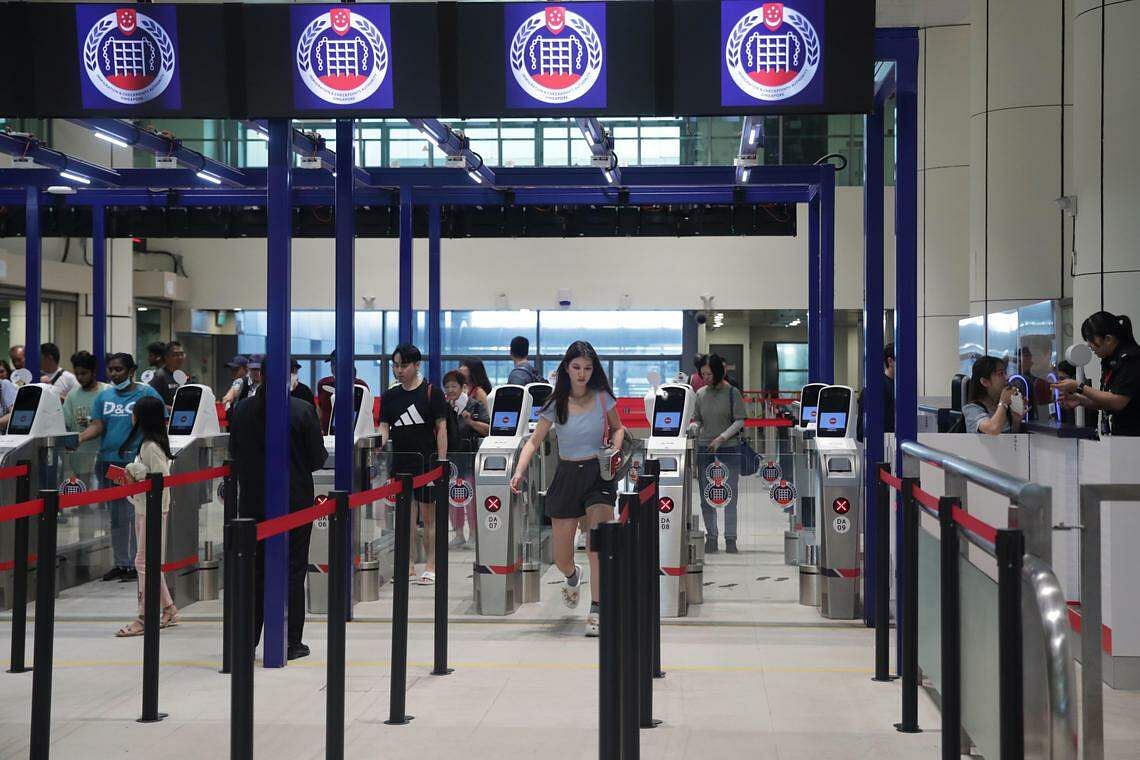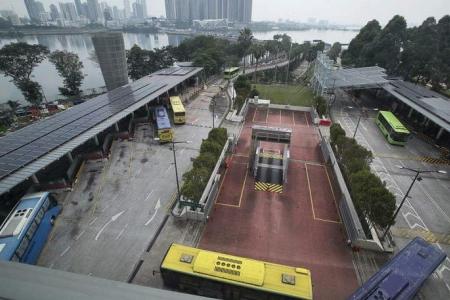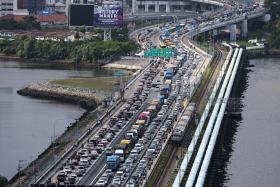Clearance rate at Woodlands Checkpoint bus hall higher with automated lanes
The use of automated lanes at the Woodlands Checkpoint has allowed 1,000 more bus travellers per hour to clear immigration during the evening departure peak period.
This is a 20 per cent increase from the pre-pandemic period in 2019, the Immigration and Checkpoints Authority (ICA) said on Saturday, the first day of the school holiday, when the number of travellers at the checkpoints typically increases.
ICA said automated immigration clearance has become the default at the bus halls of Singapore’s land checkpoints, allowing for officers to be deployed to other areas requiring more support.
The Woodlands Checkpoint bus hall currently has seven manual lanes and 68 automated clearance lanes, of which 28 are bi-directional, meaning they can be adjusted to accommodate for crowds departing or arriving in Singapore.
About 242,000 travellers pass through the Woodlands Checkpoint every day, of whom almost 100,00 are bus travellers.
Senior Assistant Commissioner Colin Tan, who is commander of ICA’s Woodlands Command, said more automated lanes will be introduced progressively over the next year.
Meanwhile, other measures have been introduced to speed up clearance for bus travellers.
They include a “loop system” for Causeway Link buses, which allows the buses to drop off and pick up passengers within the Woodlands Checkpoint compound without having to clear immigration.
Causeway Link buses ferry passengers between the Sultan Iskandar Customs, Immigration and Quarantine Complex in Johor and the Woodlands Checkpoint.
A dedicated immigration clearance lane has also been introduced for public buses departing Singapore.
The Automated Clearance Initiative was extended to the Woodlands and Tuas checkpoints in January 2023.
It allows people from 51 jurisdictions, including Malaysia, to use automated lanes, even for those visiting Singapore for the first time.
Eligible foreign visitors can submit their SG Arrival Card through the MyICA mobile app or on ICA’s website within three days before arriving in Singapore.
At the automated lanes, their biometrics – such as iris and fingerprint images – will be automatically enrolled during the clearance process.

Heavy traffic has been reported at the Singapore-Malaysia land checkpoints since travel restrictions, imposed during the Covid-19 pandemic, were lifted.
During the Good Friday weekend in April, close to 1.4 million travellers crossed the land checkpoints, with an average of about 350,000 crossings per day.
Traffic congestion at the land crossings prompted Johor Menteri Besar Onn Hafiz Ghazi to make 20 spot checks at the Sultan Iskandar Customs, Immigration and Quarantine Complex since 2022.
In interviews with the media in Malaysia, Datuk Onn Hafiz described improving connectivity with Singapore as being of paramount importance.
Meanwhile, ICA said the use of new contactless automated border control system at passenger halls from 2024 will allow Singapore residents and visitors to leave the Republic without having to use their passports.
They will have their identities verified by biometrics.
From early 2024, travellers crossing the land checkpoints in cars will be able to clear immigration by scanning QR codes.
Dedicated car lanes for automated clearance using QR codes will be introduced at the Tuas Checkpoint from 2026, while such lanes will be introduced at the redeveloped Woodlands Checkpoint from 2028.
With the traffic volume at the Woodlands Checkpoint projected to increase by almost 40 per cent by 2050, Senior Assistant Commissioner Tan said ICA will continue to further automate its processes and reduce its reliance on manpower.
The expanded Woodlands Checkpoint will, in the future, be able to handle even greater numbers of travellers, he added.
“With the new Woodlands Checkpoint, we will be able to reduce with travel time from one hour to 15 minutes,” he said.
ICA will announce plans in the coming weeks about enhancements to the clearance process for motorcycles as well as for those departing or arriving by train.
Get The New Paper on your phone with the free TNP app. Download from the Apple App Store or Google Play Store now


